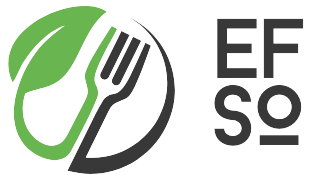FOOD CONTAMINATION
Have you ever come across mould on the flesh of an onion while preparing to cook and you’re instructed (most probably by your mom) to just cut it off and continue chopping? Yeah, don’t do that! Clean, Clean, Clean! Let’s talk about food contamination!
Food processing entails the many processes that the food we eat goes through before it reaches our tables. The food gets handled in many different ways from the point of harvest to its final form. Both the process and food handlers have a direct effect on the quality and safety of the food throughout the process. The food may get contaminated if not handled properly, e.g., it is handled by a sick person or processed with unclean equipment in an unhygienic factory.
FOOD SAFETY INVOLVES EVERYBODY IN THE FOOD CHAIN - Mike Johanns
Food contamination occurs when your food has a component that should not be there and is likely to cause you harm once you eat it. Food contaminants can be grouped into 4 types also known as hazards. But before that, you might be wondering what are hazards. Food Hazards, in particular, are the specific agents in your food that cause harm when you eat them. The food hazards are grouped into 4 categories namely; Physical, Chemical, Biological and Allergenic.
Physical HazardsThese include agents such as stones, bones, glass, metal fragments etc. On multiple occasions, I have found pieces of bones in both minced meat and boerewors (beef sausages) purchased from stores. Physical hazards in food are normally a result of contamination during processing. The result of such hazards can be loss of teeth, cuts and wounds in the mouth of the consumer and choking.
Chemical HazardsThese include your cleaning detergents such as Dettol, Jik, etc, pesticides and fertilizers. In most cases, chemical contamination may occur due to accidental spills when food is contaminated with a chemical or after cleaning for example when you don’t follow instructions and add three full lids of JIK to your sink/dishwasher instead of a drop and fail to rinse out properly. Common sources of chemical contamination are unwashed foods in which case pesticides and fertilizers may still be present on the food surface.
Biological HazardsI feel like sunlight dishwashing liquid always has the best advertisements for killing 99.9% of germs. Anyway, Biological hazards usually entail bacteria, viruses, yeast, mould, insects, bugs, and toxins. Food processing involving sick people, the presence of animals and faeces (e.g. on a farm), poor hygiene and hygienic conditions can all be sources of microbiological contamination. The mould you find on bread indicates biological hazards, so next time, please don’t throw out the few slices of bread with mould and continue to eat the rest. Moulds usually have spores, and those spores spread, so you’re actually not outsmarting anyone but instead making yourself sick.
AllergensYes, these are hazards. Allergies occur when your body has a damaging immune response to a substance. Common food allergens are fish, nuts, seafood, wheat and soy. Allergen contamination occurs when even trace amounts of allergens are accidentally introduced into food during processing. A very tiny amount of an allergen can trigger an allergic reaction in a consumer. Hence why emphasis is put on NOT eating in labs and processing areas during food manufacture.
How can you prevent or minimize food contamination?
It’s very simple,
- Clean your space before, during and after food preparation.
- Wash your hands always (I hope you know how to properly wash your hands, see insert below if you don’t)
- Clean your food always. When you see people on YouTube vlogs washing the fruits and veggies they buy from the markets, it’s not for fun. Wash your food!
- Wash your utensils before, during and after preparing food. For instance, after cutting away the mouldy part of your onion, rinse the onion, wash your hands and the knife.
- Clean out your fridge, don’t let food sit and go bad. If you’re not gonna eat it or cook it then give it to someone who will.
- Prevent cross-contamination between cooked and uncooked foods. Do not mix raw food with cooked and ready-to-eat food.
It is important to know that contaminated foods may not seem, smell or taste contaminated. It may appear very similar to foods that are safe to eat. In such cases, you’ll only know the food was contaminated once you start to experience symptoms. Symptoms associated with the consumption of contaminated food are commonly nausea, diarrhoea, and common allergy symptoms such as hives, swelling, tingling etc.
The next time you want to lick your fingers after eating a bussin’ meal, ask yourself this question – Are My Fingers Gonna Get Me Sick? Check out this infographic for a summary!
Thank you for reading!
